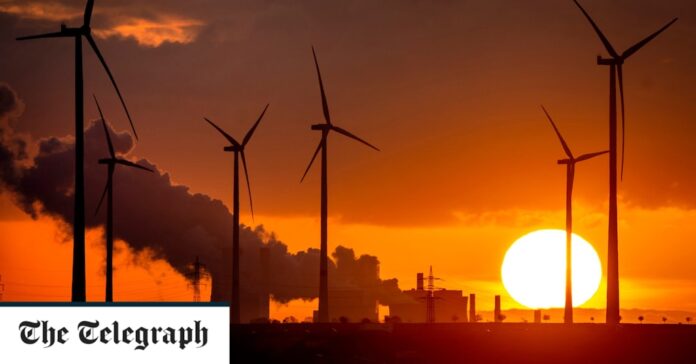After decades of failure to curb emissions, let’s accept that capitalist investment is not the problem: it’s the solution
“Insanity is doing the same thing over and over again and expecting different results.” This famous quote – often misattributed to Albert Einstein – might very well become the unofficial motto of the UN Climate Change Conference in Egypt, the 27th session of the Conference of the Parties (COP27).
Global CO₂ emissions have kept increasing since the world’s nations first committed to rein in climate change at the Earth Summit in Rio de Janeiro in 1992 – despite dozens of climate summits and the global climate agreements struck in Kyoto and Paris. This is the case, once again, in 2022, when we will collectively set a new emissions record. While rich countries increasingly promise draconian cuts (and then generally backtrack, as they import huge amounts of oil, gas and coal to save their citizens from energy poverty, as they have done most recently to address the current energy crisis), most of the future emissions will come from the currently poorer countries in Asia and Africa, as they power their climb out of abject poverty.
In the previous ten years, the world has focused more on remediating climate change than ever before. Despite this, we are not achieving anything, although no shortage of money has been wasted. In a surprisingly honest review of climate policies, the UN revealed a “lost decade”: The report found that it couldn’t tell the difference between what has happened and a world that adopted no new climate policies since 2005. Consider that: all those climate summits and grandiose promises – all that expense and trouble – and no measurable difference whatsoever.
This state of affairs is unsurprising, unfortunately, because today’s renewable energy sources have two big problems. First, they occupy a vast amount of space, often displacing nature: replacing a square yard of a gas-fired power plant requires 73 square yards of solar panels, 239 square yards of on-shore wind turbines, or an astonishing 6,000 square yards of biomass. One study found that the United States would have to devote a land area four times the size of the United Kingdom to “clean power” to fulfill President Biden’s promise of a carbon-free economy by 2050.


